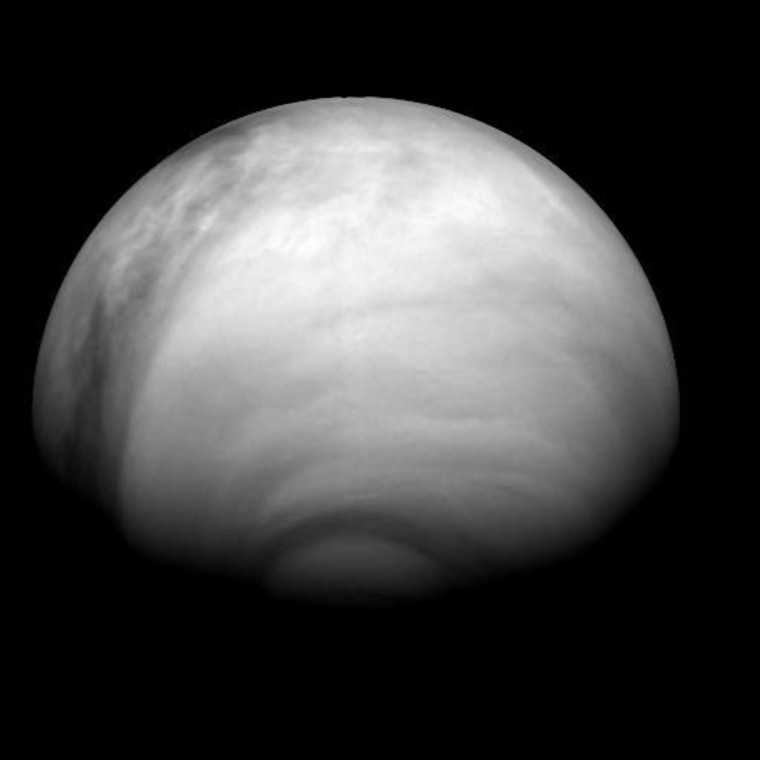The clouds are parting on Venus as new images reveal more about the structure of a dense layer that enshrouds the hot planet.
The cloudy veil allows a small amount of sunlight to reach Venus' surface but then traps in that heat like a greenhouse, causing temperatures at the surface of Venus to soar to about 870 degrees Fahrenheit (465 degrees Celsius).
While past Venus missions have revealed information about the clouds, astronomers have long wondered about a puzzling phenomenon seen when looking at them in ultraviolet light. Certain regions showed darker spots, which means some chemical in the clouds in those spots was absorbing the UV light and making the area appear dark.
New images suggest mixing between the lower and higher clouds occurs in some areas on the planet and not others, which would explain the dark and light spots.
The study, which relied on data collected by a camera and other instruments aboard the Venus Express spacecraft, brings scientists closer to figuring out the mysterious cloud chemical. While the study scientists still can't identify the chemical, they have figured out the process that causes the changes in cloud types across Venus.
The results, detailed in the Dec. 4 issue of the journal Nature, could also help scientists as they study the roaring winds on Venus, which drive cloud movements.
The Venus Express researchers, led by Dmitry Titov of the Max Planck Institute for Solar System Research, found that along the equatorial or tropical regions of Venus the cloud tops (the upper edge of the clouds) were full of that mysterious chemical and so appeared as a dark band in the UV images. By using infrared data, the researchers could map out the temperature in that same region. The results showed that like boiling water, the material at the cloud tops had moved upward from below due to convection.
"The sun heats the atmosphere at the equator and the atmosphere starts to boil or mix vertically," Titov told SPACE.com. "It comes from the depths of the cloud. It's continuously brought to the top of the clouds by this convective activity."
At the mid-latitudes, Titov and his colleagues found a bright band of clouds in the UV images, suggesting these clouds are full of sulfuric acid. The cloud tops in this region were also much colder than those in the Venus tropics. Titov explained the chilly upper layer at mid-latitudes acts like a barrier and prevents vertical mixing that would otherwise bring material up from below.
The new Venus Express data also showed the clouds in both the equatorial and mid-latitude regions extend to 45 miles (72 km) above Venus' surface. The clouds begin at about 31 miles (50 km), making for a 12-mile (20 km) thick cloud layer.
But near the planet's south pole, where a giant hurricane-like vortex swirls, the cloud tops were much lower, only extending to an altitude of 40 miles (64 km). Titov said the whirling vortex is likely responsible for the lower clouds at the south pole.
